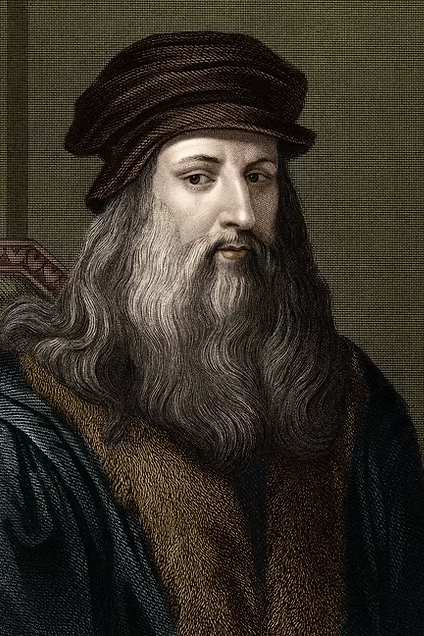
Personal info
Known for
Ultimate Talent
Gender
Male
Birthday
15 April
Location
Tuscany, Italy
Edit pageLeonardo da Vinci
Biography
Leonardo da Vinci (1452–1519) was an Italian polymath whose extraordinary intellect and talents encompassed art, science, engineering, anatomy, architecture, and invention. Born on April 15, 1452, in Vinci, a small town in the Republic of Florence, Leonardo was the illegitimate son of a notary, Piero da Vinci, and a peasant woman, Caterina. Despite his unconventional upbringing, he exhibited remarkable curiosity and artistic talent from a young age, leading to his apprenticeship with the renowned painter and sculptor Andrea del Verrocchio in Florence.
Leonardo’s career as an artist is marked by masterpieces that have become symbols of human creativity and innovation. His paintings, including The Last Supper (1495–1498) and Mona Lisa (1503–1506), are celebrated for their realistic representation of human anatomy, psychological depth, and mastery of perspective and light. These works exemplify the Renaissance ideals of balance, harmony, and the study of nature.
Beyond his artistic achievements, Leonardo’s notebooks reveal an insatiable curiosity about the natural world. He conducted detailed studies of anatomy, dissecting human bodies to understand muscles, bones, and organs, which informed both his scientific and artistic work. He also explored engineering, hydraulics, aerodynamics, and mechanics, designing innovative machines, flying devices, military fortifications, and bridges—many of which were centuries ahead of their time.
Leonardo’s approach to knowledge was holistic: he integrated observation, experimentation, and artistic skill, bridging the gap between science and art. He worked in several Italian cities, including Florence, Milan, Rome, and Venice, and spent his final years in France under the patronage of King Francis I, where he continued to create, invent, and study until his death on May 2, 1519.
Leonardo da Vinci’s legacy endures as a symbol of Renaissance humanism and intellectual curiosity. His art continues to inspire generations, while his scientific sketches and visionary inventions have influenced countless fields. He remains celebrated not only as one of history’s greatest artists but also as a profound thinker whose pursuit of knowledge and creativity reshaped the understanding of human potential.